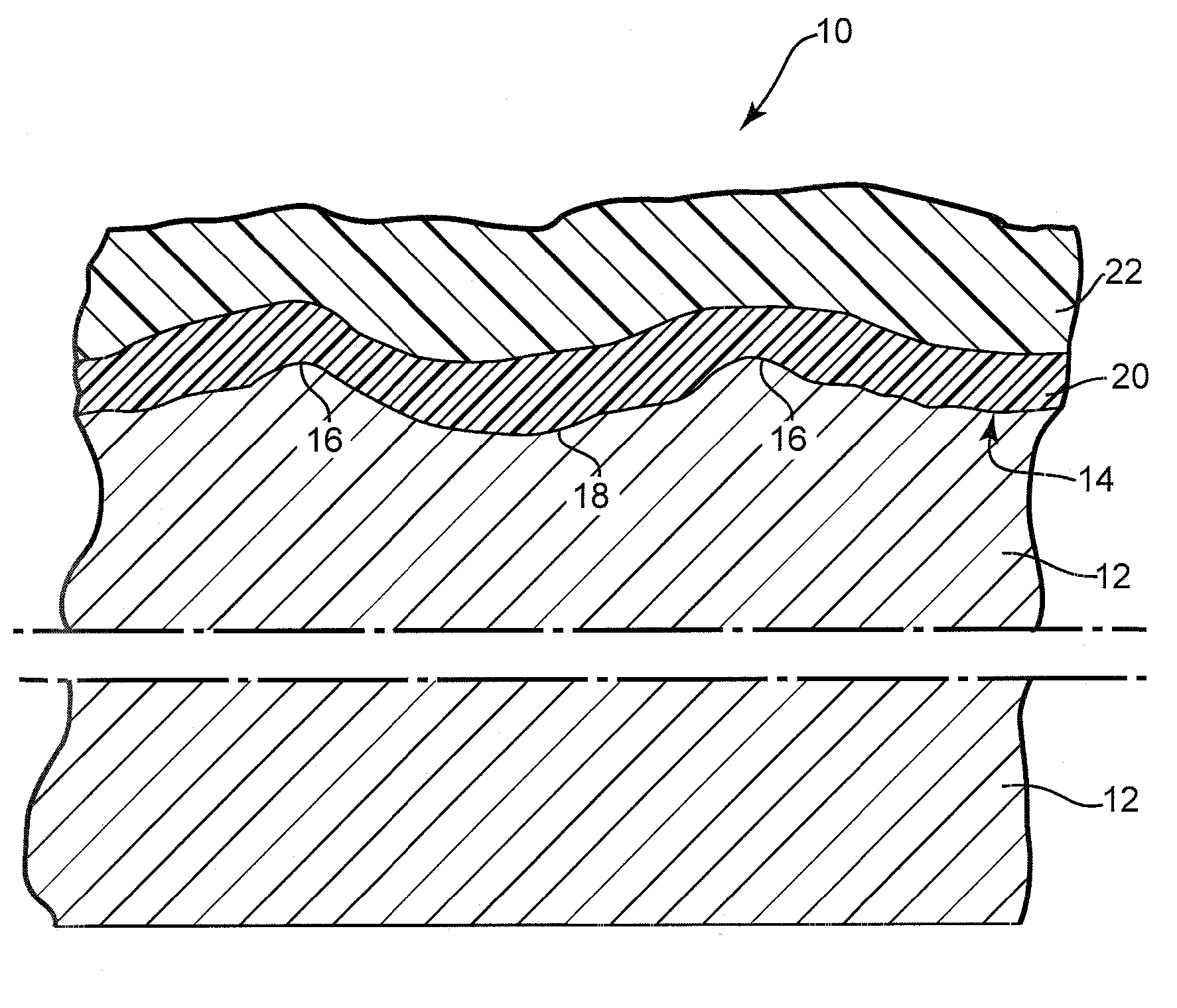Coating system for cement composite articles
a coating system and cement fiber board technology, applied in the direction of natural mineral layered products, water-setting substance layered products, transportation and packaging, etc., can solve the problems of physical and chemical changes in the composition of cement fiber boards, the damage of repeated freezing and thawing of water absorbed into cement fiber boards, and the significant problem of water absorbing damage into cement fiber boards
- Summary
- Abstract
- Description
- Claims
- Application Information
AI Technical Summary
Benefits of technology
Problems solved by technology
Method used
Image
Examples
examples
List of ingredients
[0101] AIRFLEX EF811—A vinyl acetate-ethylene (VAE) latex emulsion (Air Products, Allentown, Pa.) [0102] DAROCUR 1173—2-Hydroxy-2-methyl-1-phenylpropan-1-one (Ciba, Ardsley, N.Y.) [0103] DiTMPTA—Trimethylolpropane triacrylate (Sartomer, Exton, Pa.) [0104] EPS 2505—A styrene acrylic latex (Engineered Polymer Solutions, Marengo, Ill.) [0105] FOAMMASTER™ 111—(Cognis Cincinnati, Ohio) [0106] LUX 399—A (meth)acrylate modified polyurethane (Alberdink Boley, Greensboro, N.C.) [0107] NEOCAR 2535—A vinyl ester acrylic latex (Dow, Midland, Mich.) [0108] Potassium silicate (PQ Corporation, Valley Forge, Pa.) [0109] TMPTA—Trimethylolpropane triacrylate (Sartomer, Exton, Pa.)
examples 1a and 1b
Radiation-Curable Composition with Latex Polymer and Olefin
[0110] Example 1a: In a mixing vessel the following components are added under agitation:
DAROCUR 11731.9 gramsTMPTA9.5 grams
[0111] In a second mixing vessel, the above mixture is then added under agitation to a mixture of
EPS 250587.5 gramsDeionized water 250 gramsFOAMMASTER 1110.25 grams
[0112] After mixing for 30 minutes, the coating system is allowed to de-air. The coating system is then applied to a fiber cement article at a dry film thickness of 0.5 to 0.7 mils, and a portion of the water is removed, either by air drying, a heated drying stage or by application to a warm substrate (˜38° C.). The resulting mixture will cure upon exposure to ultraviolet light. Application of a topcoat as described in the above-mentioned U.S. patent application Ser. Nos. 11 / 300,070, 11 / 342,412 and 11 / 560,329 should provide an improved freeze thaw and wet adhesion coating system for fiber cement.
[0113] Example 1b: The above procedure ma...
examples 2a and 2b
Radiation-Curable Composition with Latex Polymer, Olefin and Potassium Silicate
[0114] Example 2a: In a mixing vessel the following components are added under agitation:
DAROCUR 11731.9 gramsTMPTA9.5 grams
[0115] In a second mixing vessel, the above mixture is then added under agitation to a mixture of
NEOCAR 253587.5 gramsDeionized water 296 gramsFOAMMASTER 1110.25 grams
[0116] and is then followed by the addition of:
[0117] After mixing for 30 minutes, the coating system is allowed to de-air. The coating system is then applied to a fiber cement article at a dry film thickness of 0.5 to 0.7 mils, and a portion of the water is removed, either by air drying, a heated drying stage or by application to a warm substrate (˜38° C.). The resulting mixture will cure upon exposure to ultraviolet light. Application of a topcoat as described in the above-mentioned U.S. patent application Ser. Nos. 11 / 300,070, 11 / 342,412 and 11 / 560,329 should provide an improved freez...
PUM
| Property | Measurement | Unit |
|---|---|---|
| density | aaaaa | aaaaa |
| temperature | aaaaa | aaaaa |
| thickness | aaaaa | aaaaa |
Abstract
Description
Claims
Application Information
 Login to View More
Login to View More - R&D
- Intellectual Property
- Life Sciences
- Materials
- Tech Scout
- Unparalleled Data Quality
- Higher Quality Content
- 60% Fewer Hallucinations
Browse by: Latest US Patents, China's latest patents, Technical Efficacy Thesaurus, Application Domain, Technology Topic, Popular Technical Reports.
© 2025 PatSnap. All rights reserved.Legal|Privacy policy|Modern Slavery Act Transparency Statement|Sitemap|About US| Contact US: help@patsnap.com


